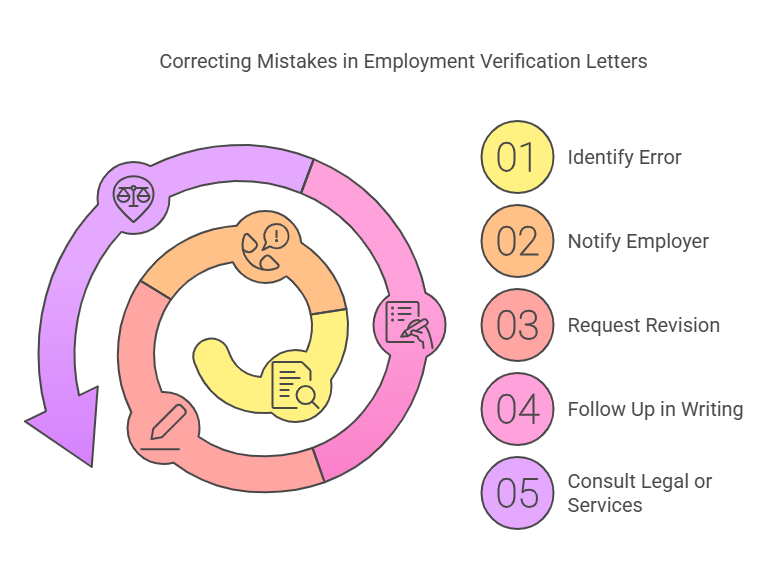Steps to Write a Past Employment Verification Letter
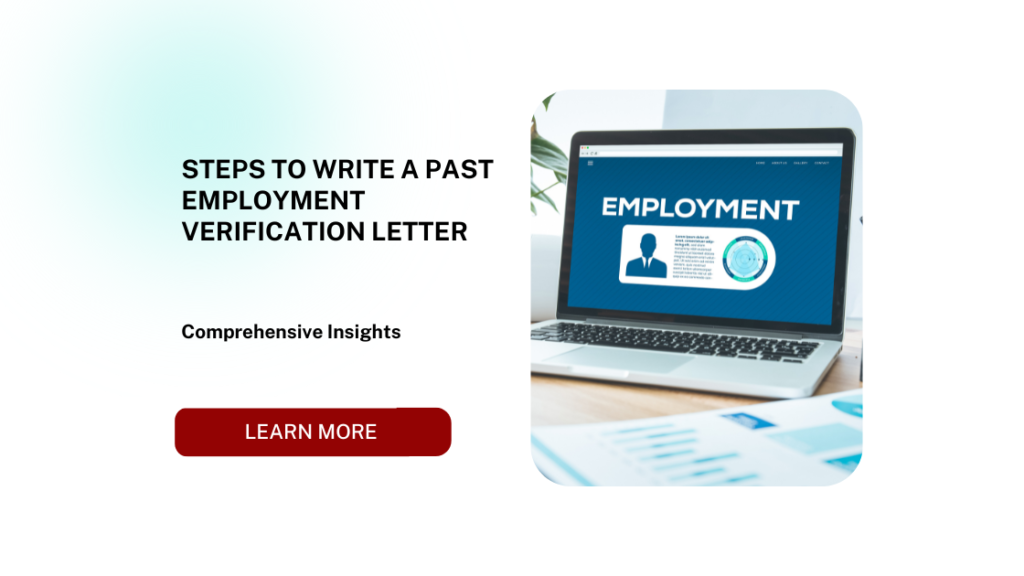
What is a Past Employment Verification Letter and Why Is It Important?
When transitioning between jobs, applying for loans, or undergoing background checks, proof of prior work history is often necessary. A Past Employment Verification Letter serves as an official document confirming a person’s employment history with a former employer.
What is a Past Employment Verification Letter?
A Past Employment Verification Letter is a formal document provided by a previous employer that verifies details about a former employee’s tenure, job title, and responsibilities. It serves as evidence of employment, enabling the recipient to confirm key information about the individual’s work history.
The letter is often requested by hiring managers, financial institutions, or government agencies for various purposes, ensuring that the individual’s provided information is accurate and reliable.
Why is a Past Employment Verification Letter Important?
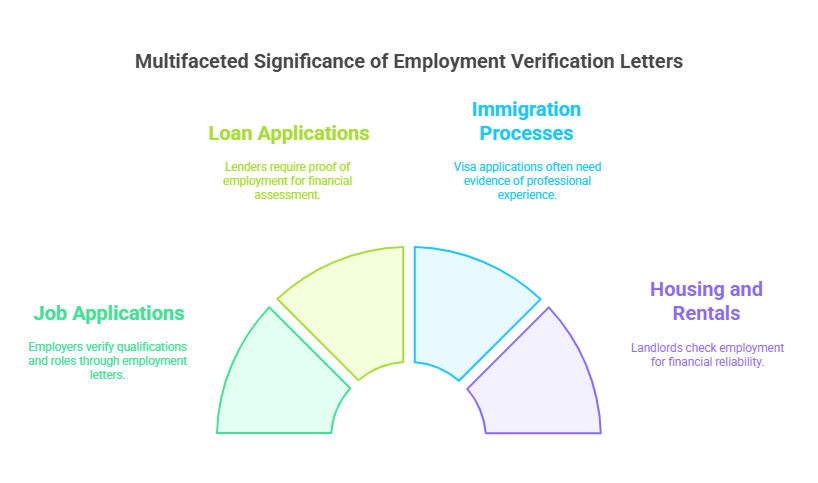
Professional and Personal Applications
The importance of a past employment verification letter spans numerous scenarios:
- Job Applications: Employers use the letter to confirm the candidate’s qualifications, including job roles and accomplishments.
- Loan Applications: Lenders often require proof of employment to assess financial stability.
- Immigration Processes: Visa applications may require evidence of professional experience.
- Housing and Rentals: Landlords may request employment verification to ensure financial reliability.
Credibility and Trust
Having an employment verification letter readily available demonstrates transparency and helps establish trust with the requesting party. It ensures that the individual’s employment claims are validated by an official source.
How Employers and Other Entities Use Past Employment Verification Letters
- Hiring Managers: Evaluate a candidate’s professional history to ensure they meet the job requirements.
- Financial Institutions: Verify income stability and employment for approving loans or mortgages.
- Government Agencies: Confirm employment for visa, immigration, or legal purposes.
Additionally, past employers may issue these letters to help former employees meet such requirements, ensuring a smooth transition into new opportunities.
What Information Should a Past Employment Verification Letter Include?
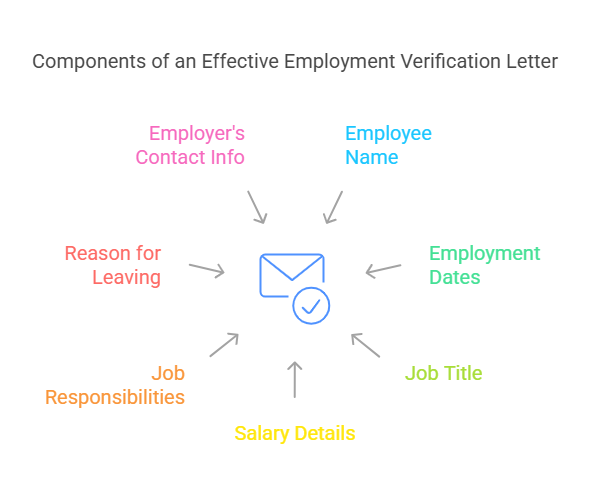
For a verification letter to be effective, it must contain specific details that meet the needs of the requesting party. Key elements include:
- Employee Name: The full legal name of the individual.
- Employment Dates: Start and end dates of employment.
- Job Title: The position(s) held during employment.
- Salary Details (optional): Include this only if requested or required for the purpose.
- Job Responsibilities: A concise summary of the employee’s roles and duties.
- Reason for Leaving (optional): Often included if relevant, such as in cases involving hiring decisions.
- Employer’s Contact Information: Details of the person or department issuing the letter, enabling further communication if needed.
By including these details, the letter provides a clear and comprehensive record of the individual’s employment.
Who Requests Past Employment Verification Letters?
Several parties may request these letters, each for specific purposes:
- Employees: To support applications for jobs, loans, housing, or other needs.
- Employers: When verifying the qualifications of potential hires.
- Financial Institutions: For approving credit or mortgage applications.
- Government Agencies: To meet legal or immigration requirements.
The need for such letters highlights their critical role in professional and personal advancement.
How to Write and Request a Past Employment Verification Letter: A Complete Guide
A Past Employment Verification Letter plays a crucial role in confirming an individual’s work history. Whether you’re an employee requesting one or an employer tasked with writing it, understanding the process ensures the letter is professional, accurate, and meets the necessary requirements.
Steps for Requesting a Past Employment Verification Letter
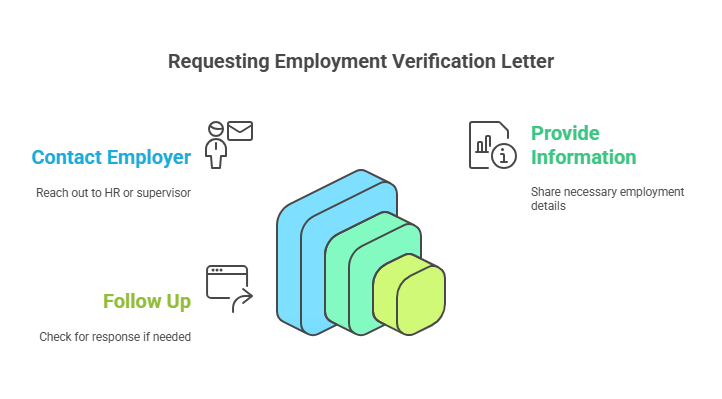
1. Identify the Purpose of the Letter
Before requesting a letter, determine its purpose. Knowing whether it’s for a job application, loan approval, or another reason will help tailor the request. For example:
- Job Applications: Specify the details required by the potential employer (e.g., job title, employment dates).
- Financial Institutions: Clarify if salary information is needed.
- Government Agencies: Confirm if a notarized copy is required.
2. Contact Your Previous Employer
Reach out to your former employer’s HR department or your direct supervisor. Use professional communication, such as email or phone, and explain your request clearly.
3. Provide Necessary Information
When making the request, include details to streamline the process:
- Your full name (as it appeared during employment).
- Employment dates.
- Job title(s).
- The reason for the letter.
- Where and how the letter should be sent (e.g., email, mail, or directly to the third party).
4. Follow Up
If you don’t receive a response within a reasonable timeframe (e.g., 7–10 business days), follow up politely.
How to Write a Past Employment Verification Letter
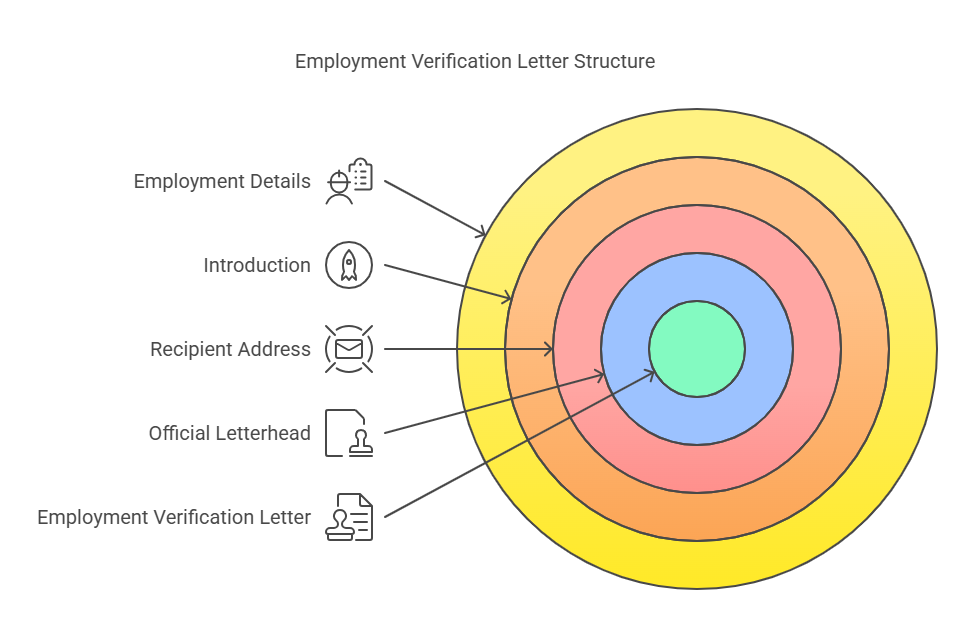
If you’re an employer, writing an effective verification letter is essential to ensure clarity and professionalism. Follow these steps to draft the letter:
Step-by-Step Guide to Writing the Letter
- Use Official Letterhead
Begin the letter on company letterhead to establish authenticity. Include the company name, address, phone number, and email. - Address the Requesting Party
Include the name and address of the recipient or write “To Whom It May Concern” if the recipient is unknown. - Start with a Clear Introduction
State the purpose of the letter and identify the employee being verified. Example:
“This letter serves to confirm that [Employee Name] was employed with [Company Name].”
- Provide Employment Details
Include essential information, such as:
- Employment dates.
- Job title(s).
- Job responsibilities or duties (optional but recommended).
- Mention Salary (if requested)
If the requesting party requires salary details, state them clearly. If not, omit this information for privacy. - Close Professionally
Conclude with contact details for verification. Example:
“Should you require further information, please feel free to contact us at [Phone Number] or [Email Address].”
- Sign the Letter
Include a handwritten or digital signature, along with the name and job title of the verifier.
Template for a Past Employment Verification Letter
[Company Letterhead]
[Date]
[Recipient Name]
[Recipient Address]
[City, State, ZIP Code]
Subject: Employment Verification for [Employee Name]
Dear [Recipient Name/To Whom It May Concern],
This letter confirms that [Employee Name] was employed at [Company Name] from [Start Date] to [End Date]. During this period, [Employee Name] held the position of [Job Title].
[Optional: Include a brief description of their job responsibilities.]
If requested: [Employee Name]’s annual salary during their tenure was [Salary Amount].
If you require further information, please contact us at [Phone Number] or [Email Address].
Sincerely,
[Your Full Name]
[Your Job Title]
[Company Name]
Tips for Writing a Clear and Effective Employment Verification Letter
- Be Concise: Stick to the requested information. Avoid unnecessary details.
- Remain Professional: Use formal language and tone throughout the letter.
- Ensure Accuracy: Double-check all details, especially employment dates and job titles.
- Maintain Privacy: Share sensitive details (e.g., salary) only when explicitly requested.
Common Mistakes to Avoid
- Incorrect Details: Errors in dates or job titles can create complications for the employee.
- Lack of Contact Information: Always include a way for the recipient to verify the letter’s authenticity.
- Unprofessional Formatting: Avoid informal tone, typos, or missing key elements.
How to Handle Delays or Unresponsive Employers
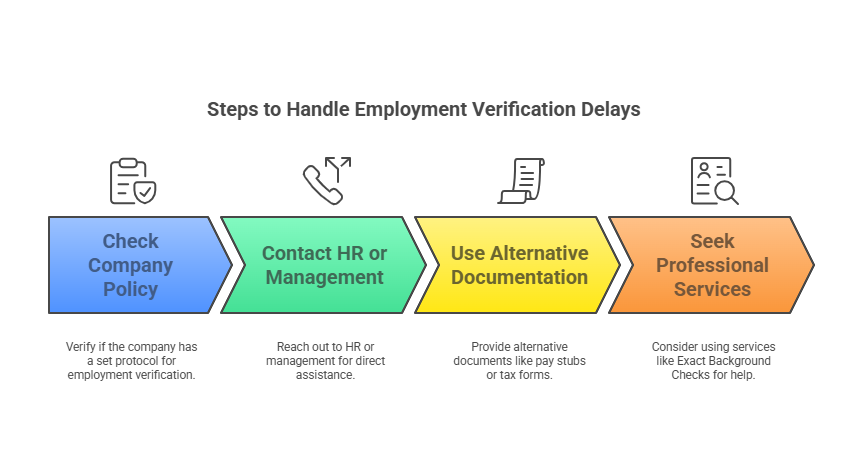
1. Check the Company’s Policy
Some companies have set policies or portals for employment verification. Ensure you’ve followed the proper protocol.
2. Contact HR or Management Directly
If there’s no response, try reaching out to another contact within the company, such as the HR manager or former supervisor.
3. Use Alternative Documentation
If a former employer is unresponsive, consider providing:
- Old pay stubs.
- Offer letters or contracts.
- Tax documents (e.g., W-2 or 1099 forms).
4. Seek Professional Services
Companies like Exact Background Checks can assist in obtaining employment verification when direct communication with a past employer is unsuccessful.
How Long Does It Take to Obtain a Verification Letter?
On average, it takes 7–14 business days for employers to process an employment verification request. Delays may occur due to:
- Company policies requiring multiple approvals.
- High request volumes.
- The absence of key personnel (e.g., HR managers).
For urgent needs, follow up regularly or use professional verification services to expedite the process.

